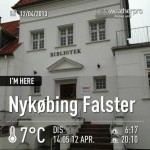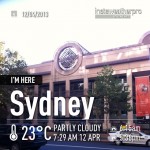Library clients using a mobile device have their personal access to your library services and collections in their pocket 24/7, they also have GPS and a camera to interact with the environment around them. Have you considered how that could be used to deliver library services? Combining GPS and photography creates the potential for some interesting local history experiences and other fun ways to interact with the world around you.
DISCOVER:
- Try out Historypin [download the smartphone apps ] Look at photographs in your local area on the map and try exploring further afield. (NB: there are even some photographs pinned in Antarctica!)
- Compare the different experience when you view the Historypin map on a desktop computer.
- Using the app, take a photograph of your library building and “pin it” by uploading it to the map. There are lots of “how to” videos and notes available for Historypin
- Have you considered creating your own library game using SCVNGR, it was used to gamify the ALIA Online conference
EXPLORE:
- Using Historypin take a photograph of a local building (eg. town hall, public school) and upload it and pin it using the Street View option. eg. Sydney GPO
- Using Historypin, find images pinned in your area and try creating a “repeat” of an image, photographing it on location and uploading the image using the app.
- Try linking together several photographs to make a tour. (eg. several buildings in your main street or a local square) The Beatlemania tour gives you an idea of what’s possible.
- Link together some photographs into a collection (they don’t need to be in the same area, but just have a common theme eg. local post offices or school buildings. The 1906 Earthquake and Fire collection illustrates a disaster that affected San Francisco.
- Use the app to photograph an old photograph in your collection to pin to the map
- There are other historical / map interfaces including: What was there and Sepia Town
- There are more links available on our Pinterest Board
THINKING POINTS:
- Can you create a local history walking tour, using photographs and information from your collection?
- What community engagement opportunities exist when people share stories inspired by photographs, locations and memories?
- Are there other ways your community could take photographs to help tell the story of ‘a day in the life’ at your school, in your community or at your university?
- Perhaps you could hold a program using the Guardian Citizen Journalism app?
- Could you hold a fun teen program using the Drift app which guides you on a walk using randomly assembled instructions?

